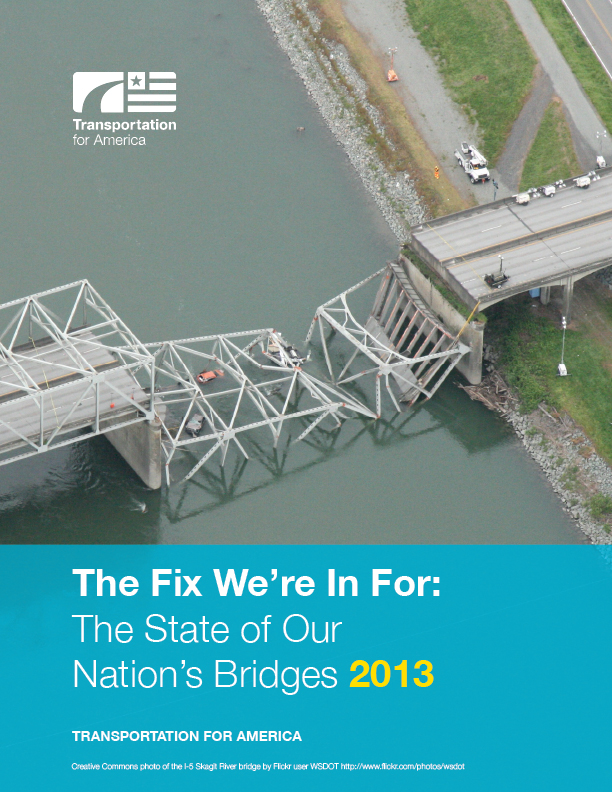Earlier this week, Transportation for America released The Fix We’re In For report which, using the newest data from the Federal Highway Administration’s National Bridge Inventory, finds that one out of nine bridges across the country are structurally deficient. These 66,503 deficient bridges are crossed by 260 million drivers a day.
Closer to home, over 3,200 bridges in New York, New Jersey and Connecticut — which combined carry nearly 34 million drivers a day — are structurally deficient, according to this latest analysis.
States in our region ranked in the middle of the pack nationally. New York’s bridge conditions were 17th worst in the country, with 12.5 percent of its bridges rated structurally deficient. New Jersey was 26th worst (9.9 percent deficient), and Connecticut 27th worst (9.7 percent deficient).


New Jersey was the only one of the three states to reduce the number of deficient bridges between T4America’s 2011 report and this year’s edition, but there’s still work to be done in the Garden State. For example, the Pulaski Skyway, which TSTC New Jersey Advocate Janna Chernetz called “a prime example of what happens when existing bridge infrastructure is neglected” will have half its roadway shut down for rehabilitation beginning next year.
Thirty years ago in Connecticut, the collapse of the Mianus River Bridge drew national attention to the plight of bridges. State leaders responded with billions of dollars of investment in repair and maintenance, but the focus soon shifted toward building new roads. But with state bridge conditions again slipping, it’s time for states to reconsider big-ticket road projects like the $500 million widening of I-84 in Waterbury. In a positive move, however, Governor Malloy and the Connecticut General Assembly reformed and increased funding for the state’s Local Bridge Program during this year’s legislative session.
And the New York State Department of Transportation has adopted a “Preservation First” approach to transportation planning that will focus dollars on repair needs.
States are likely finding their job in maintaining bridges is harder thanks to aspects of MAP-21, the recently passed federal transportation law. Under previous federal law, a Highway Bridge Program provided dedicated funding for bridges, including smaller state and local bridges. But MAP-21 eliminated that program. Now, the main source of federal funds available for smaller bridges is the Surface Transportation Program — a flexible pot of money that is already used for other needed priorities like local roads, pedestrian and bicycle safety, and some public transportation. To reverse the squeeze on bridges and local priorities, states may need to get creative with how they spend federal dollars and federal representatives will need to increase funding for needed maintenance and repair of existing infrastructure.

[…] three more. The anniversary comes on the heels of a recently released Transportation for America report that shows one in nine bridges in the United States to be structurally deficient, and compares the […]
[…] of those bridges is structurally deficient and in need of repair or replacement. In Connecticut, that number has grown, not declined, since last […]
[…] to make consideration of pedestrian and bicycling facilities a routine part of rebuilding our crumbling transportation system. The intent of NYSDOT’s “Preservation First” policy is to rebuild what we have, the way we […]
[…] to make consideration of pedestrian and bicycling facilities a routine part of rebuilding our crumbling transportation system. The intent of NYSDOT’s “Preservation First” policy is to rebuild what we have, the way we […]
[…] River was the perfect backdrop for Murphy’s call. The bridge is one of Connecticut’s many structurally-deficient bridges, and is scheduled to be replaced in 2017 with $13 million in federal […]